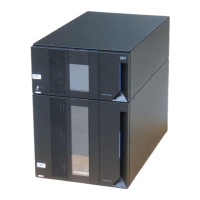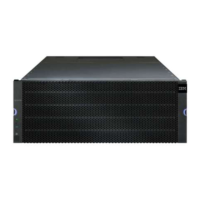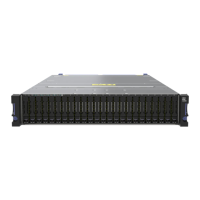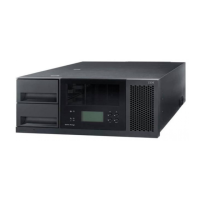524 IBM Midrange System Storage Hardware Guide
iSCSI performance considerations
A Fibre Channel SAN almost always yields higher performance than an iSCSI SAN. FC does
not suffer from congestion and oversubscription problems as readily as iSCSI due to both the
FC protocol and the general segregation of FC traffic itself. FC includes a mechanism for
port-to-port throttling, not just end-to-end throttling, and can limit the amount of data that a
connected system sends. This mechanism avoids situations in which information must be
dropped and avoids degradation into a retransmission recovery scheme that can limit the
storage network’s performance. For this reason, and many others, including general protocol
efficiency, FC is more capable of operating near-wire speed than iSCSI is likely to be.
From the host perspective, you must consider several elements before deploying an iSCSI
SAN. These considerations include the number of physical NICs that will be installed in the
hosts themselves, the types of NICs (see Table B-1 on page 518), whether a software initiator
or a hardware initiator will be used, how many paths will exist between the initiator and the
target, which failover, load-balancing driver, or both may be used and, most importantly, what
speed will the infrastructure operate. Generically speaking, iSCSI solutions might be a good
fit for those environments where the bulk of the data processing activity is considered to be of
the random, small-block variety. Given the relatively modest throughput available within a
current iSCSI SAN compared to 8 Gb FC fabrics, it is not likely that adequate throughput will
be available within an Ethernet network or the specific target ports to handle workloads that
consist primarily of large, sequential transactions. This behavior can be more easily seen
using the following simplified equation:
Throughput = IOPS x I/O size
Thus, as the size of the inbound I/Os decrease and typically become more random in nature,
as in some applications, databases and general file sharing, the amount of throughput
required also is reduced. Conversely, as the size of the inbound I/Os increase and typically
become more sequential in nature, such as video editing or disk-to-disk backup, the amount
of throughput required greatly increases.
Initial testing of the DS5000 storage subsystems configured with 1 Gb iSCSI HICs has shown
that a heavily configured storage subsystem will likely offer a greater proportion of the “small
block random I/O” performance to an 8 Gb FC configuration. Alternatively, given the
maximum of four 1 Gb iSCSI target ports currently available on the DS5000 series of storage
subsystems, enough available bandwidth might not be available to provide high levels of
“large block sequential” performance relative to what will potentially be available using
multiple 8 Gb FC interfaces. The performance difference between the two interface types can
become very large in this type of environment.
One of the most obvious conclusions given is that, typically, 1 Gb iSCSI is not a good fit for
environments or applications that require high throughput.
After it has been determined whether a given application might not be a logical candidate for
iSCSI connectivity based on throughput requirements, you need to consider whether you will
use iSCSI HBAs or use on-board NICs with software initiators. The DS5000 storage
subsystems support both methods, and you will make this determination on a cost to required
performance basis. In principle, a software initiator performs nearly as well as a
hardware-based initiator in terms of driving storage I/Os. The primary difference is largely in
the amount of CPU cycles that are required to become devoted to handling iSCSI traffic in the
absence of a hardware-based initiator with appropriate TOE support.
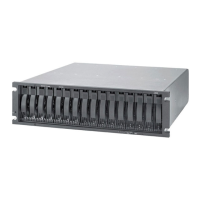
